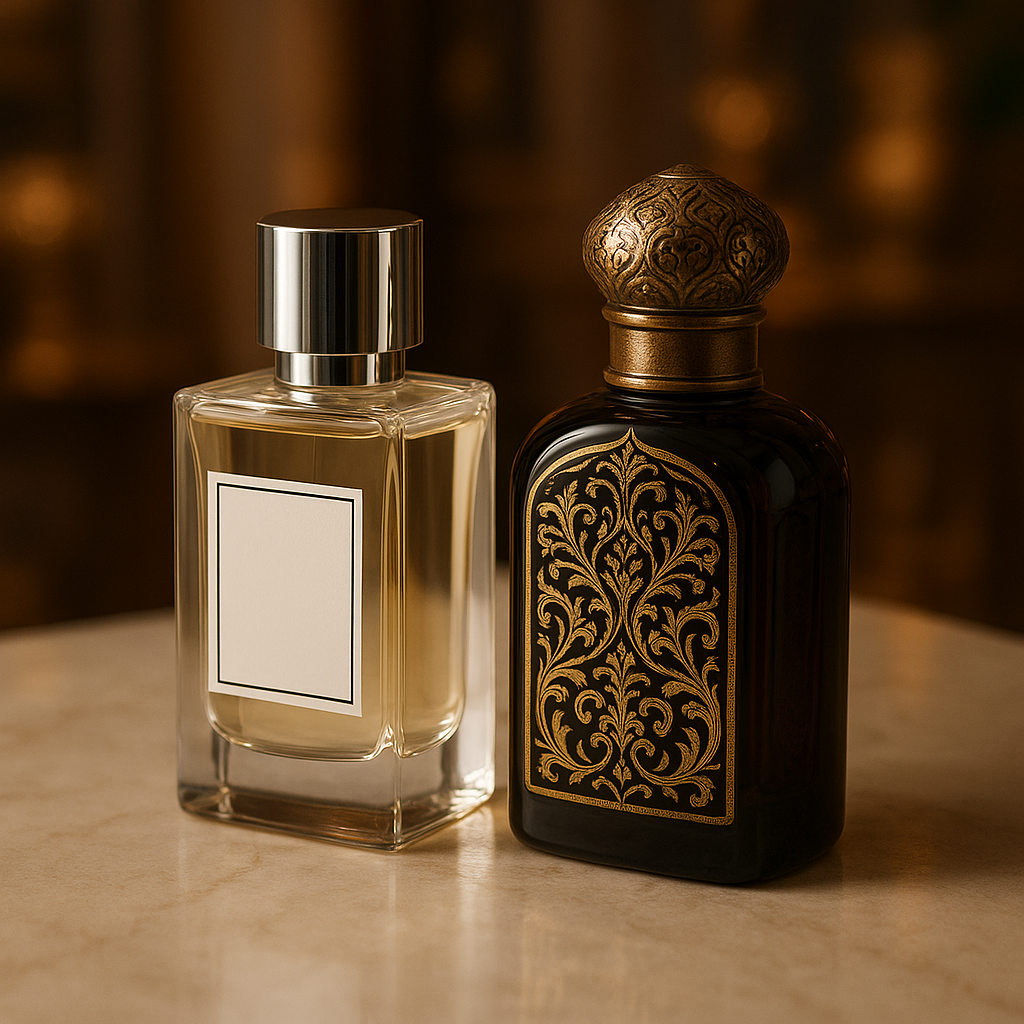The Difference Between Eastern and Western Perfumes: 3 Deep Contrasts in Scent and Identity

Table of Contents
What Is the Difference Between Eastern and Western Perfumes?
The difference between Eastern and Western perfumes goes far beyond scent.
It reflects two distinct views of beauty, identity, and the very purpose of fragrance.
While Western perfumes are designed for freshness and practicality, Eastern perfumes tell stories of warmth, memory, and heritage.
Understanding this difference helps you choose a fragrance that not only smells good, but also expresses who you are.
1. Difference in Composition: Warmth vs. Freshness
Eastern perfumes are known for their rich, warm, and deep compositions.
They often contain:
- Oud
- Amber
- Musk
- Spices like cardamom, clove, and cinnamon
These ingredients create a sensual, long-lasting scent that suits evenings, formal occasions, and traditional wear.
In contrast, Western perfumes favour clarity and brightness. You’ll often find:
- Citrus notes like bergamot and lemon
- Florals such as lavender and jasmine
- Soft woods and herbs
These perfumes are made for daytime, the office, or casual wear. They offer freshness and elegance with a light touch.
2. Difference in Philosophy: Story vs. Statement
The second difference between Eastern and Western perfumes is the design philosophy.
Eastern fragrances are built slowly, layer by layer. They unfold like a narrative—with mystery and depth. Each note lingers longer and connects emotionally with the wearer.
Western perfumes are designed for impact. They’re crisp, often linear, and aim to deliver a clear mood or vibe from the first spray. They match modern lifestyles that demand convenience and clarity.
3. Difference in Cultural Identity: Personal Signature vs. Mood Accessory
In Eastern cultures, fragrance is often a personal signature.
Many people choose a single perfume and stick with it for years—it becomes part of how others remember them. Scents are deeply tied to personal identity and family rituals (like bakhoor or oil-based attars).
In Western markets, fragrance is more of a mood-based accessory. People switch perfumes by season, activity, or even emotion. There’s a perfume for summer, another for the gym, and a different one for a date night.
Real-World Examples
Popular Eastern Perfumes
- Wood Imperial – Oud, leather, amber
- Honey Tobacco – Honey, spice, tobacco
Popular Western Perfumes
- Aqwa Bergamot – Bergamot, pink pepper, rosemary
- Dior Homme Cologne – Clean, powdery, light citrus
Trusted Resources
- Made-in-China Insights – Arabic vs. Western Perfume
- Dukhni – Arabic vs. Western Fragrance Notes
- Amir Oud – What Makes Arabic Perfume Different?
- Emirates Oud – Cultural Differences in Perfume
Conclusion
The difference between Eastern and Western perfumes isn’t just in scent, but in emotion, culture, and intention.
One tells a story; the other makes a statement.
One holds you close; the other moves with you lightly.
Whether you lean towards the mystery of the East or the elegance of the West, the right perfume isn’t just what you wear — it’s how you’re remembered.

